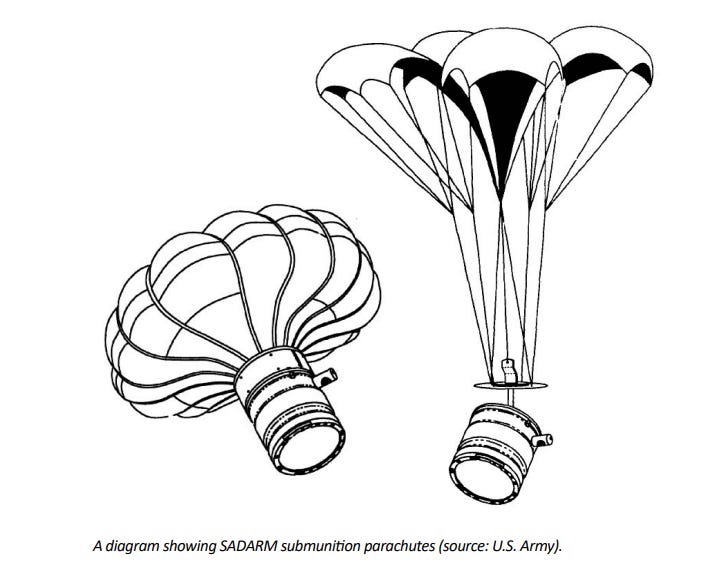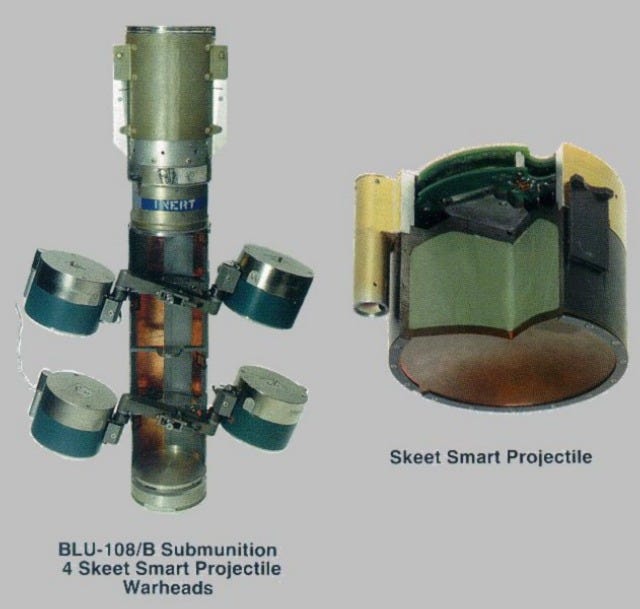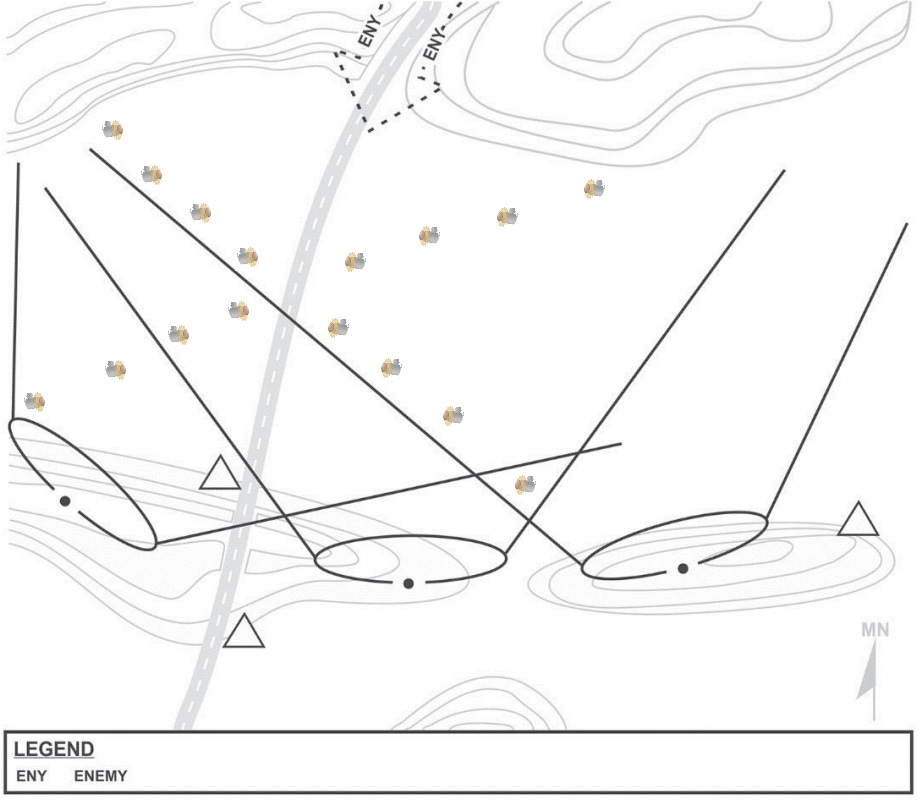Explosively Formed Penetrator (EFP) Operations
Simple, Efficient, Low-Cost Anti-Armor Weapons
The Value of EFPs
Effective anti-armor weapons
Kill vehicles up to 100 meters from the mine.
Top attack from UAVs and elevated positions can kill tanks.
Soldier is not exposed to return fire when the EFP is used.
Lightweight, easy to carry and deploy.
Inexpensive, basic command detonated EFP systems cost less than an artillery round. (More than one million artillery rounds have been supplied to Ukraine in 2022.)
Simple devices, easy and quick for soldiers to learn to use well.
Basic EFP Construction
EFP Detonation – Slug Formation
Typically armor penetration is about 50 percent of the diameter of the copper EFP liner. Tantalum liners have an even better penetration ratio.
Examples of EFPS
The M303 SOFDK Special Operations Forces Demolition Kit EFPs
NLAW – Famous EFP Warhead Weapon
The NLAW has proven to be an effective tank killer on the Ukrainian battlefield. It has demonstrated that a 150mm EFP is sufficient to kill a Russian tank with a top-attack.
Selectable Lightweight Attack Munition (SLAM)
The SLAM mine has an EFP warhead designed to penetrate 40mm of armor. It can be command or sensor detonated. Its planned use is for side or bottom attacks against lightly armored vehicles and trucks. It can also be used for top attacks by positioning the mine in trees, on roadside or overhead signs and poles, or the roofs or upper stories of buildings.
Field EFP Mines Throughout the Ground Forces
Ukrainian ground forces should be abundantly supplied with basic EFP mines. As many as possible should have Passive Infrared (PIR) or other sensors for initiating detonation. To increase the safety of Ukrainian soldiers.
Every battalion should be equipped with 100-150 EFPs of varying sizes. Along with sensors for automated targeting and field wire for command detonation. Most should be in the 125-175mm diameter range. These can kill all but tanks from the side. The 150+ mm EFPs can kill tanks with a top attack.
Manufactured or improvised tripods can be used to position EFPs. The SOFDK uses a common camera tripod for their EFPs. They can also be attached to trees, signposts, and other objects to provide a stable firing position. Or placed in berms, hillsides, or mounds of dirt.
EFPs on UAVs
EFPs are an important weapon for UAVs. The Sensor-Fuzed EFP Submunitions that are present in several bombs and artillery projectiles should be modified for dropping by UAVs.
US Air Force CBU-105 bomb
US 155mm SADARM projectile
Swedish-French 155 BONUS projectile
German SMArt 155 projectile
The submunitions are already designed for release above an armored target. As a UAV weapon they can be used with even more efficiency. The UAV will only drop the EFP if there is a visually confirmed armored vehicle below.
Some of the common problems that limited efficient use of Sensor-Fuzed EFP munitions in the past include EFPs colliding in midair, multiple EFPs targeting the same enemy vehicle, EFPs targeting lower priority types of enemy vehicles, dispersion of enemy vehicles, and the movement of enemy vehicles away from the target area while the artillery mission is processed. All of these problems can be reduced with UAV delivered EFPs.
Additionally, better efficiency comes with smaller and less costly logistical support requirements. Depending on the model, these submunitions weigh from 5-20 kg vs. a 155mm artillery round that is 40-60 kg. The CBU-105 dispenses 40 submunitions. The 155mm artillery rounds typically have 2 submunitions so they will automatically expend 2 every time used. Even if there is only 1 enemy vehicle. Or may not be used against a single vehicle because of the cost. A UAV can use their submunitions singly. Achieving close to one-shot, one kill capability.
Training and UAV safety are made easier with Sensor-Fuzed EFPs. UAV pilots can release a submunition close to an enemy vehicle instead of needing to achieve a precise location to drop a “dumb” bomb or mortar round. This means the UAV can be flown higher and/or faster near the target. The sensors on these EFPs are usually effective at night, further increasing their lethality and safety. This will make it possible for UAVs to fly more daily sorties,
According to open sources, there are over 120,000 Sensor-Fuzed EFP submunitions in stockpiled weapons in NATO countries. Some of these could be extracted and replaced by newer submunitions. Providing 1000s to Ukraine now. As production is restarted or increased, additional submunitions can be provided to Ukraine and NATO nations can update their munitions over the next few years.
Submunition Deployment from UAVs
Just as the submunitions deploy from artillery projectiles or bombs, the UAV will release the submunition. A parachute deploys and the sensors scan the ground for armored vehicles. When a vehicle is detected, the EFP fires at the top of the vehicle where the armor is thinnest.
In most cases the UAV operator will visually verify there is an enemy armored vehicle before dropping the EFP. Providing more economical use of each submunition than the artillery or bomb delivery of submunitions.
Another option under active EW (Electronic Warfare) conditions, is to emulate artillery targeting. Ground or other observers will report the location of enemy vehicles. The UAV, guided by GPS/GLONASS and INS (Inertial Navigation System), fly to the location and release the Sensor-Fuzed EFPs. Even when the GPS is jammed, the INS can navigate the UAV to the target area. Then, instead of visually identifying the target, the EFP is released to find a target with its integrated sensors.
New submunitions can be produced with less expensive components because the UAV dropped submunitions don’t need to be able to survive the extreme physical conditions of artillery or jet aircraft delivery.
155mm Artillery Submunitions
Examples of German and French produced 155mm artillery rounds with Sensor-Fuzed EFP submunitions.
BLU-108/B Submunition of a CBU-105
A CBU-105 has 10 BLU-108/B Submunitions. Each BLU-108/B has 4 Skeet EFP Smart Projectiles. A total of 40 EFPs per bomb.
The Skeet can be used separately as a weapon dropped from UAVs for precision anti-armor attacks.
EFPs as Part of a Layered Anti-Armor Plan
Use EFP equipped UAVs for attacks on armored vehicles behind enemy lines.
Use EFPs as part of the defensive scheme on likely avenues of approach. When possible, kill enemy vehicles with cheap EFPs and conserve the more expensive missiles.
Use EFPs for ambushes of enemy vehicles on patrol.
UAV EFPs are suitable for offensive and defensive operations while ground EFPs are best deployed defensively and to protect against counterattacks during offensive operations.
Ground-based EFPs are more effective against BTRs/BMPs and other light armored vehicles than against tanks. Therefore, ATGMs like Javelin, NLAW, Stugna-P should prioritize shooting tanks.
Triggering Ground-based EFPS
Command detonated only needs a blasting cap, battery, and field telephone wire. The user manually detonates it when an enemy vehicle is entering its kill zone.
Sensor-Fuzed uses a Passive Infrared (PIR) or other sensors to detect a vehicle and send the signal to detonate. Cheap and easy to use sensors are readily available but cannot distinguish between friendly, enemy, or civilian vehicles. Best emplaced when enemy vehicles are known to be approaching. (Artillery and air-dropped sensor-fuzed EFPs are smarter at identifying vehicles but are not perfect.) Can be emplaced along regular enemy routes and provide time for soldiers to leave the area before the enemy enters the kill zone. Especially useful for Special Forces and partisans operating behind enemy lines.
Can be used along railroads to attack locomotives as they pass. A three pack of 150mm EFPs could destroy a locomotive without causing a derailment. This shuts down the railroad for a while without a major risk to civilians who may also be on the train. A known military transport train could be more comprehensively attacked by a long string of EFPs. This allows soldiers or partisans to place hidden EFPs in the tree line along the tracks. These will be more difficult to detect than mines or sabotage directly on the tracks. Vibration sensors can be set with a sensitivity to detonate against a train but not a truck on the tracks in advance of the train.
Mixed system would incorporate a simple control box with each mine to provide remote controlled additional functions to the EFP mines.
On/Off switch between the sensor and mine to close the circuit to turn them on when enemy vehicles approach.
Counter to have mines ignore a set number of vehicles before turning on. To allow a column of enemy vehicles to move abreast of a column of EFP mines before going active. Thereby striking the whole column at the same time.
Advanced control box that can receive individual coded messages. Allowing the soldier to use one command line to select which mine to fire. This could be used for a mix of EFP and Claymore mines. The soldier could select the appropriate mine for each target in the kill zone.
EFP Linear Layouts
Depending on the terrain, the lines of EFPs may be facing the same direction or alternating directions. Alternating directions are recommended based on the assumption that when struck, an enemy force will spread out or try to outflank the defending force. Or simply need to maneuver around a destroyed vehicle. This provides the possibility of striking these vehicles.
EFP Double Linear Layout
EFP V Layout
The V Layout mines may not be triggered until the enemy vehicles are deep in the kill zone.
Linear and V EFP Layout Combined
EFP X Layout
X and V EFP Layout Combination
Perimeter Defense EFP Layout
Claymore Mine Partnered with EFP Mine
The M18A1 Claymore mine is a mainstay of US Army perimeter defenses and ambushes. Every US soldier is taught how to use Claymore mines. Like the EFP mine, it is inexpensive, simple to learn, and lightweight.
This should be the anti-personnel partner to the EFP mines. Every battalion should be equipped with 100-150 Claymores.
As with the EFPs, Claymores can be devastating when positioned for top attack against enemy soldiers or trucks. Along with an EFP attack on a BMP/BTR, a Claymore can be positioned to strike the vehicle survivors.
Note: The Soviet-era MON-50 mine was a clone of the Claymore.
Recommendations
Mass produce basic EFPs for command detonation or mating with basic standalone sensors. Initially:
100,000 basic EFP mines.
100,000 Claymore mines.
Mass produce standalone sensors and additional field wire for EFP operations.
Acquire 25,000+ Sensor-Fuzed EFPs like the SLAM mine and those used in the CBU-105, SADARM, 155 BONUS, SMArt 155, and the NLAW systems. Either newly produced or salvaged from older munitions.
Acquire 10-20 UAVs per battalion capable of dropping EFPs and other munitions on enemy armored vehicles.




























